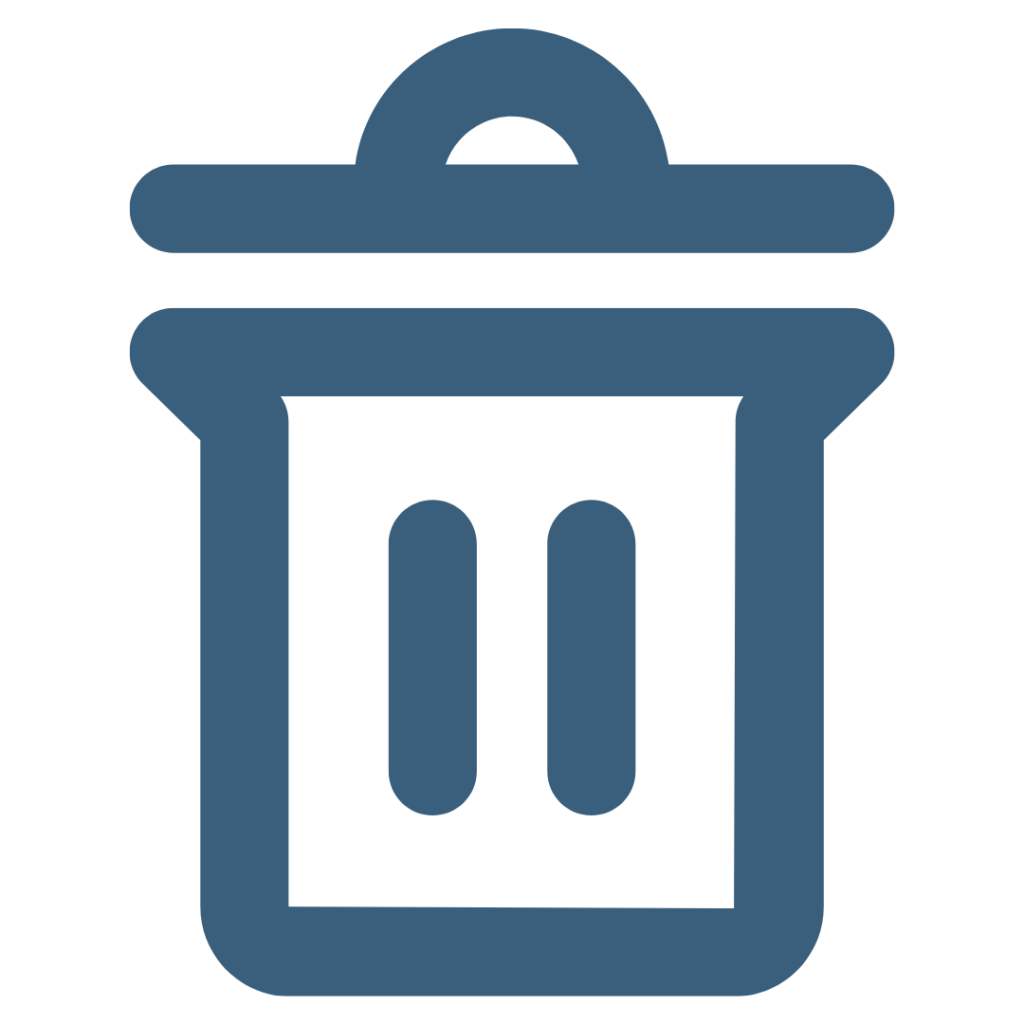So you’re interested in pursuing a Climate Solution related to Waste. Great choice! Read through this Deep Dive to learn more about this topic so that you’re armed with all the facts as you develop your project!
Deep Dive Table of Contents

On this page, you’ll find the following:
- The Waste section of our Climate Solutions Shark Tank video
- A deeper investigation of all things Waste
- An explanation of how Waste is an environmental justice issue
- A helpful list of suggested project ideas to get you inspired
- Delve Deeper – A list of resources and further research for your team to use as you develop your project
Climate Solutions Shark Tank – Waste
How Waste Impacts the Climate Crisis
Clothing, electronics, single-use plastics, and all the other stuff we buy and use have a big effect on our climate. Making smart choices about what we buy, how we use it, and how we dispose of it can make a big difference in the amount of waste we produce and the greenhouse gases associated with our consumption. The manufacture, distribution and use of the goods and food we rely on in our daily lives—as well as management of the resulting waste—all require energy. This energy mostly comes from fossil fuels, which are the largest global source of heat-trapping greenhouse gas emissions. (US Environmental Protection Agency) As a matter of fact, 29 percent of US greenhouse gas emissions come from the provision of goods produced within the United States and managing the waste from those goods represents 1 to 5 percent of US greenhouse gas emissions (US EPA). Most waste is either recycled, incinerated or landfilled. All three of these options produce greenhouse gas emissions.
For instance, globally we use about 150 million tons of single use plastics each year and only about 7 percent of plastic is ever recycled worldwide. But, even recycling plastic produces greenhouse gas emissions, as fossil fuels are combusted to run the machines that shred plastic waste and heat it up to make other products (Columbia.edu).

Right now, plastic recycling in the US is not working well. For decades, the US sent its recycled plastic to China, but in 2017, China banned certain types of solid waste—mainly plastics. Without a market for recycled plastic, recycling is no longer makes economic sense for many cities. The Plastic Pollution Coalition estimates that in 2018, only two percent of municipal plastic waste was recycled in the US and six times more plastic was burned than recycled. (Columbia.edu).
Burning our waste, or incineration, also has a large climate impact. Based on projections from the World Energy Council, if plastics production and incineration increase as expected, greenhouse gas emissions will increase to 49 million metric tons by 2030 and 91 million metric tons by 2050. The climate impact isn’t the only concern. Incineration facilities are disproportionately built near communities of color and low-income populations. Incineration is a massive environmental injustice issue – not just in the United States, but all over the world, people who are subjected to the pollution from these incinerators often are the ones who are least responsible for the waste in the first place and have to bear the brunt of the impacts. Burning waste can release thousands of pollutants. Incinerator workers and people living near facilities are particularly at risk to exposures. (Yale Climate Connections)
If our waste is not recycled or burned it will most likely end up in a landfill. Landfills contribute to global warming because once waste has been dumped very little air remains below the surface. Methane gas is generated and released into the environment as a byproduct of the digestion of organic materials by organisms. Methane is a greenhouse gas up to 25 times as potent as carbon dioxide as a driver of climate change, and landfills are the United States’ third largest source of methane emissions, according to the EPA (climatecentral.org). At the same time, methane emissions from landfills represent a lost opportunity to capture and use a significant energy resource (US EPA).
When we look at waste management and solutions, there are two main approaches: one deals with responsibly managing the waste we already have through things like reusing, recycling, and composting, rather than sending things to a landfill or letting them become litter. The second approach deals with eliminating the waste in the first place through programs that encourage refusing things we don’t really need and reducing our use.
The bottom line is, the more we buy and throw away stuff, the more energy it takes to make new stuff, and the faster climate change accelerates. The best solution to reduce greenhouse gases caused by waste is to reduce our use of unnecessary products and reduce our waste as much as possible. This addresses the entire system of our stuff and can substantially reduce climate emissions by changing what and how much we buy, what resources went into making it, how long it’s designed to last, how much gets reused, recycled or composted, and what we throw away.
Waste and Environmental Justice
Regardless of how our waste is disposed, it ends up being an environmental justice issue. Recycling facilities, waste transfer stations, incinerators, and landfills are all largely placed in the developing world or in America’s fenceline communities. A fenceline community is a neighborhood that is immediately adjacent to a company and is directly affected by their noise, pollution and operations. These communities tend to be made up of people of color and those with less income who do not have the resources to fight back against a large corporation or industry. These waste management facilities cause widespread pollution and health issues such as asthma and heart disease. For example, New York City residents and visitors produce over 20,000 tons of solid waste every single day, according to the New York City Environmental Justice Alliance, About 75 percent of that solid waste is processed in just a handful of communities: specifically in Southeast Queens, South Bronx, and North Brooklyn. The population in these areas is primarily African-American and Latino and the resulting concentration of waste transfer stations and Materials Recovery Facilities (MRFs) have been making people in those neighborhoods sick (greenamerica.org).
There are many things we can do to act on this today! We can avoid single-use disposable products, purchase fewer goods, reuse what we have rather than trash and buy new, and dispose of materials properly to protect the health of people and the environment!
Waste Project ideas and Solutions
Campaign Types Key – 🔊 🏢 📅 👍
In a future Phase, you’ll learn about the different types of campaigns you can use to implement your solution. Each project below aligns with one or more of these Campaign Types so we’ve marked them out using these symbols:
- 🔊 – Public Education & Action Campaign
- 🏢 – Institutional Change Campaign
- 📅 – Event Promotion Campaign
- 👍 – Program Adoption & Participation
Solution: Reduce Single-Use Plastics (Promote Reusable Items)
- 🔊 – Educate and Inspire the public to reduce their use of single-use plastics (bags, water bottles, utensils, take out containers, face masks) and use reusable options instead
- 🏢 – Advocate to businesses, campuses or restaurants to switch from plastic single-use food service items to sustainable, biodegradable options
- 🏢 – Advocate to corporations to reduce packaging or switch to more sustainable packaging options
- 🏢 – Lobby your local or state government to enact or strengthen bans on commonly used single-use items
- 🏢 – Fundraise for and advocate to a school or city to install water bottle filling stations to reduce single-use bottle use

Solution: Reduce Litter
- 🔊 – Educate the public on the harms of litter to the environment and inspire them to pick up litter when they see it on the ground
- 📅 – Host a socially distanced littler pick up or Instagram litter challenge
Solution: Reduce Clothing/Textile Waste
- 🔊 – Educate the public about the harms of fast fashion and textile waste and encourage responsible purchasing and use of clothing swaps and second-hand clothing apps
- 📅 – Host a used-clothing or shoe drive
- 🔊 – Educate the public about the harm to the environment from clothing microfibers and promote the purchasing of natural fiber clothing and use of items that trap microfibers in the wash
Solution: Reduce Electronic Waste
- 📅 – Host an E-Waste drive
Solution: Promote Reusing and Upcycling Items
- 🔊 – Educate and inspire the public to donate used goods, trade with neighbors and buy second-hand items when possible
Delve Deeper
Check out the below videos and links to help you learn even more about this topic!
The Climate Cost of Fashion
I Want You To Stop Recycling
Wasteland: Why Recycling Isn’t The Answer To Our Trash Problem
Articles for More Info
Organizations that Can Help You Build Your Project
Environmental Justice and Waste
Dirty Recycling Systems are Trashing Communities of Color
Environmental Justice – opposing a toxic Waste Landfill
How Uniontown, Alabama, Became Victim of Environmental Injustice
The Story of Plastic: How Plastic Production Pollutes Small Towns
Next Step: Pick Your Climate Solution Topic
Are you sold on Waste for your project? Fantastic! Head back to Phase 1 to fill out the form titled “Phase 1.1 – Pick a Climate Solutions Topic to Focus On”
Want to explore other Deep Dives? Click here to return to the Deep Dive menu.